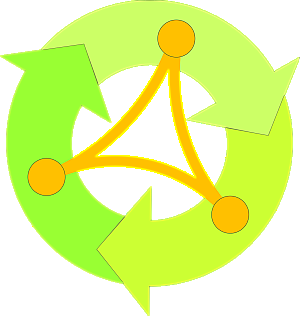m-hub - a web-based data hub for collection and query of material compositions of the building stock of the City of Vienna
Short Description

Starting point/motivation
Recycling and re-use of buildings requires precise knowledge of the material composition. Unfortunately, to date the building surveys carried out for this purpose have only been conducted individually, without the results being used for other purposes.
Contents and goals
The project is therefore developing a data hub in which participating organizations can enter probings and building surveys and receive feedback. The platform anonymizes this data and passes it on to other participants. In addition, a prediction of the material composition of similar buildings is being trained at a central location, which participants can use to obtain an assessment for buildings that have not yet been surveyed.
By aggregating this data, it is possible to draw conclusions about the entire material depot of the City of Vienna - e.g. for use in material statistics and for tracking climate targets. Through continuous input by participants, the data pool grows and the forecast becomes more accurate - which in turn leads to increased added value for each participating organization.
Methods
The existing approaches from the previous projects M-DAB, M-DAB2 and BIMStocks are interwoven into a new solution that is specifically optimized for the exchange of information on the material composition of buildings. Great importance is attached to an open-source, repeatable workflow in order to be able to use the resulting approach even after the end of the project in and beyond the city limits - e.g. also integrated with further-reaching municipal processes (submission, building permit).
Expected results
The developed solution is aimed not only at property developers but also at public administration, standardization institutions, research institutions and companies in the circular economy (topic of re-use and recycling). Finally, it is to be hosted by the Chamber of Architects and Civil Engineers or the city administration (Vienna IT), for example, in order to allow open and equal participation. The three advantages for participating organizations are
- The ability to quickly see an estimate of the range of material intensities and superstructures based on the characteristics of a property / object or to be able to compare their own measurements with previous measurements based on evidence.
- To be able to subject specializations to a plausibility check based on existing data (within / outside the reference range). Related object categories can also be found for a specific material composition.
- To be able to offer projections in terms of the material composition of the building stock in a continuously improving form (e.g. for real estate development, research, materials management).
Project Partners
Project management
TU Wien - Research Unit Digital Architecture and Planning
Project or cooperation partners
- TU Wien - Research Unit Integral Planning and Industrial Construction
- TU Wien - Research Unit Waste and Resource Management
- TU Wien - Research Unit of Local Spatial Planning
- materialnomaden GmbH
- RM Umweltkonsultenten ZT GmbH
Associated partner
- EPEA GmbH - Part of Drees & Sommer
- IG Immobilien Management GmbH
- Chamber of Civil Engineers for Vienna, Lower Austria and Burgenland
- City of Vienna - Executive Office for Urban Planning, Development and Construction
- City of Vienna - City Surveying Office MA41
Contact Address
Privatdozent Dipl.-Ing. Dr. Gabriel Wurzer
Karlsplatz 13, E259.1
A-1040 Vienna
Tel.: +43 (650) 966 21 55
E-mail: gabriel.wurzer@tuwien.ac.at
Web: www.dap.tuwien.ac.at
